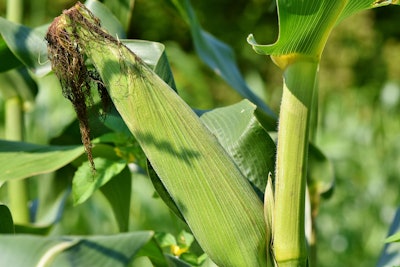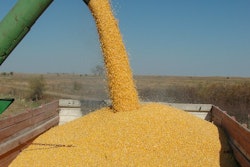
There are numerous advantages to buying U.S. corn – the higher levels of available starch for animal digestibility, lower levels of mycotoxins and larger kernel size, to name a few.
A new study confirms that the origin of corn used by feed millers worldwide has an impact on the financial performance of their feed industries and, ultimately, growth of their livestock.
“When you talk to feed industry professionals around the world about U.S. corn versus other origins, they always talk in a broad sense about the physical characteristics of the grain," says U.S. Grains Council’s (USGC’s) Senior Director of Global Strategies Kurt Shultz.
"They typically mention corn grades, BCFM levels and corn color. Starch values, mycotoxin or protein, are important but secondary factors. Rarely do they ever mention ‘animal performance."
Shultz says U.S. corn is typically described as ‘dusty’ or fragile, but no one ever discusses how the different origins perform in animal feeds.
"Hence the reason for the study, to drill down and explore the fundamental performance of different origin corn as a source of starch or energy in livestock rations," says Shultz.
"Not only are we looking at the level of starch, but whether it’s available to the animal in the digestion process.”
Past studies have found that U.S. corn contains more starch than that of other origins, however, research has not shown whether that difference should affect the price per metric ton.
This study examined the performance of the different origins (United States, Argentinian and Brazilian) corn. Samples were taken from the warehouses of customers in Mexico, Colombia, Japan, Vietnam and Taiwan and the United States.
The research was inspired by another sector that heavily relies on corn, the industrial corn processing sector. The ability of U.S. corn to outperform crops of different origins has already been seen in the industrial setting when producing such products as corn starch or corn syrup.
“We’ve seen that U.S. corn yields three or four percent higher levels of starch in a large industrial corn plant, and that can translate into millions of dollars of additional profit if those plants are using only U.S.-origin grain,” Shultz says.
“So, the theory was that the same starch should be available for the animals also, which led to the research we’re doing in the animal sector.”
Dr. Alvaro Garcia, a livestock nutritionist with Dellait, discussed some of the initial findings, including that U.S. corn contains more floury starch compared to Brazilian and Argentinian crops, which makes it more available for digestion by livestock but can also make U.S. corn more fragile.
In comparison, Brazilian and Argentinian corn contains less floury starch, which makes it more difficult for animals to digest in their feed. Additionally, U.S. corn was very low in mycotoxins, while that of Argentina and Brazil was relatively higher.
“We need to look at the corn itself. If you have the possibility of analysis, that would be great, but if you don’t, always look for larger kernels. The larger the kernel, the more starch there will be in the total kernel. One thing we did see in these results was that Argentina and Brazil had more fiber in the corn, so that also diluted the energy,” Garcia said.
“Another key concern about U.S. corn is the higher levels of broken kernels and foreign material (BCFM), however, our analysis shows that BCFM is only broken corn and has 96% to 98% the value of U.S. corn, so BCFM is not a negative in terms of feeding value. It may pose challenges in handling the grain, but there are storage and handling techniques to address this.”
For more information on the study, click here.

















